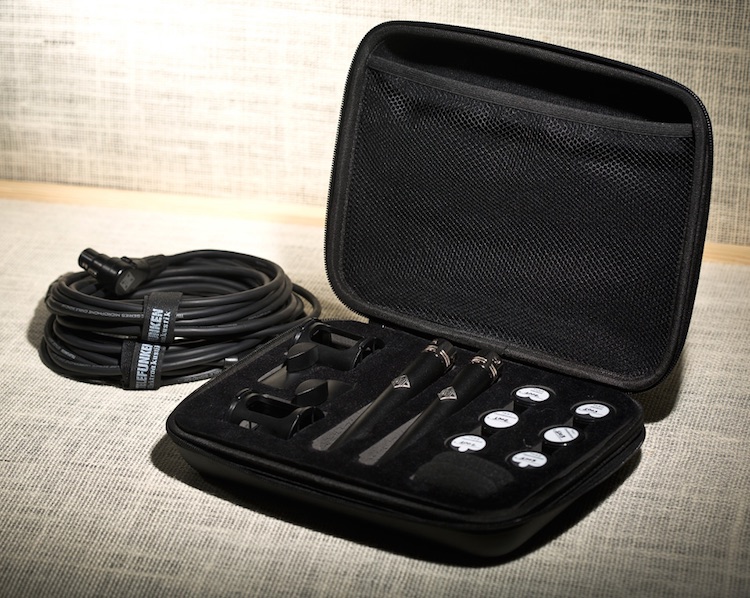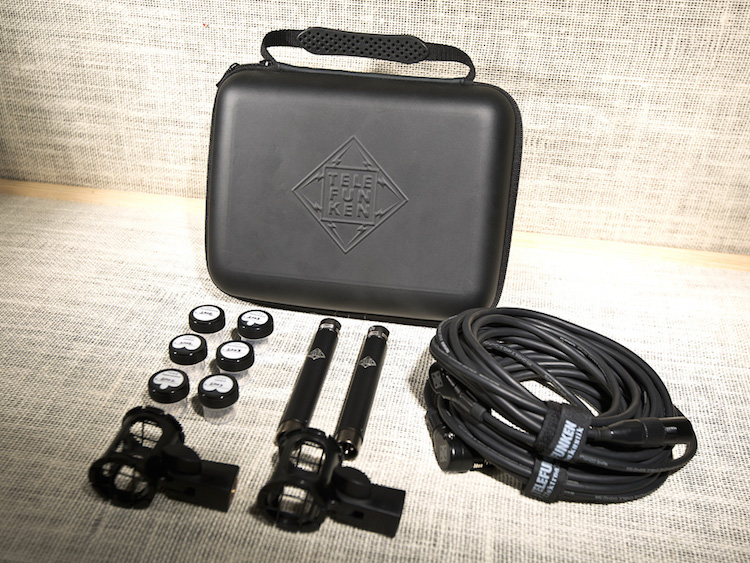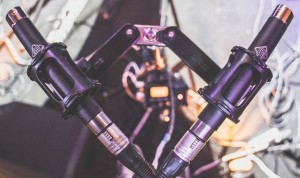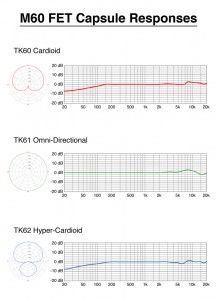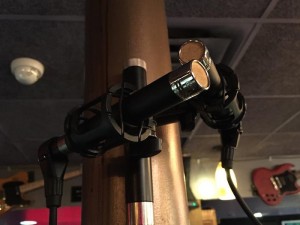Gear Review: Telefunken M60 Master Stereo Set
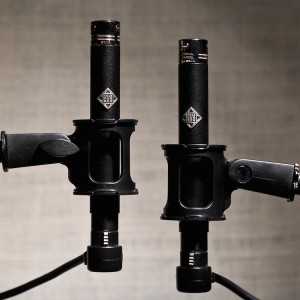
The Telefunken M60 FET small diaphragm condenser microphone, now available as a stereo “Master Set.”
In modern recording, engineers often rely on close mic’ing techniques, trying to capture the direct sound of a source with little to no ambient information included.
As anyone who has ever recorded at home can attest, in certain rooms, this approach can become a virtual necessity rather than just a stylistic choice.
However, there still remain sounds and spaces for which capturing the source as it naturally exists—in all its richly detailed glory—is still the best approach.
When it comes to this, stereo mic techniques that employ a separate left and right channel are particularly excellent for adding depth, width and realism to your tracks. Stereo mic techniques carry another advantage: They can even be adjusted in real time to augment particular characteristics, allowing the engineer to tailor the stereo image to the needs of the recording as it is captured.
Telefunken has created the M60 Master Stereo Set with just this purpose in mind. This stereo set of small-diaphragm FET condensers with swappable capsules is an all-in-one mic system designed to help with such an auspicious task.
Unboxing
Telefunken’s Stereo Master Set arrives in a hard-molded rubber case. Unzipping the case reveals the full stereo set, laid protected by custom-carved high-density foam. The carrying case itself is fairly sturdy and solid, although I did notice some of the stitching come a bit loose in my review time.
This is not exactly a “flight” case. It’s not a metal suitcase like those which come with much more expensive mics and it shouldn’t be treated as such. That being said, I’m inclined to believe that under moderate usage (and if placed inside other cases during airline or other such travel) it would protect the mics under most circumstances.
Included in the case are the two M60 microphone bodies, two shock-mounts and two each of the following capsules: Cardioid, Hypercardioid, and Omni. Additionally, two high-quality 5-meter mic cables with right-angle female connectors are provided, as well as a pair of windscreens. Each capsule rests in its own plastic container within the foam to protect its delicate electronics.
Got Your Number
Right out of the gate, I noticed that both mic bodies and each of the capsules are engraved with their own individual serial numbers. The mics and cardioid capsules were consecutively numbered, with the hypercardioid and omni capsules being only a few away from that.
I like this touch. It implies that these mics were not grabbed from huge piles and randomly thrown into a box, but more likely manufactured at the same time, by the same person. It also makes it easier to track for repair and replacement and adds to the legacy feel of the product.
Consecutive—or at least near-consecutive—numbered gear is always a hot commodity in the vintage realm, and I feel this will help the mics maintain value over the years.
In Use
In practical applications, the mics were a big hit with myself, my assistant, as well as the artists. We tried them on drum overheads, acoustic and electric guitar, banjo, percussion…even vocals. (Generally a no-no with small diaphragm condensers).
In every aspect, the M60 set excelled.
On a drumset, I was able to get excellent stereo imaging when used in spaced-pair configuration. I loved them here, as we were stuck with some cheap cymbals and the FETs really helped to even out what could have been a harsh tone.
Additionally, the capsules are hot-swappable, meaning one can swap out one polar pattern for another on the fly, without disengaging phantom power. (Don’t forget to mute the cans and speaker though!) Being able to quickly adjust the amount of room in one’s overheads is a wonderful thing.
By moving the mics around on the banjo and acoustic guitar, I was able to strike just the right balance of pluck against sustain and body. Again, the small diaphragm nature made them excellent for capturing transient information, but I never found the mics to get strident or hash in tone. All percussion duties were rendered smoothly and pleasantly.
All three capsules show a small increase in frequency response between 5-10kHz, so I wouldn’t characterize these mics as razor flat measurement microphones, but rather smooth sounding and pleasing on most sources. A max SPL rating of 130, and a self-noise rating of only 5 dB means this mic can be used in soft and loud settings and performs well in both.
Mastering Stereo
Many of the stereo techniques developed by our audio forefathers (many thanks Drs Blumlein and Fletcher!) are easily achieved with this set.
If I were to look for a gripe, it would be that there is no bi-directional capsule. This precludes us from using Blumlein, Mid-Side, or even the Faulkner Techniques. I love figure-8, and would be very pleased to see it offered as part of a set like this. That being said, bidirectional, small-diaphragm condensers are fairly uncommon, and one such mic is often more than the price of this entire set.
Practically, this is a very useful and high-quality set for studio, live, or location recording. It takes care of much of what most engineers will need from a stereo set of SDC’s, in a small, convenient package. Any recordists who are on-the-go, or looking to help capture sounds with depth and realism would do well to investigate this offering.
Comparable models from other manufacturers include the Miktek C5 and the Neumann KM184, however both of these are cardioid only. Many companies make similar small diaphragm condensers, but they often include only one capsule, with others available as additional purchases. I know of no other package that includes all of these patterns in one package in this price range.
The Telefunken M60 Master Stereo Set retails for $1695. The pared-down stereo set retails for $1150.
Rich Crescenti is a freelance engineer, producer, teacher, and drummer who works out of several studios in NYC, helping bands make unique recordings. Rich also hits things with sticks for the Brooklyn-based rock band Bugs in the Dark.
Please note: When you buy products through links on this page, we may earn an affiliate commission.







